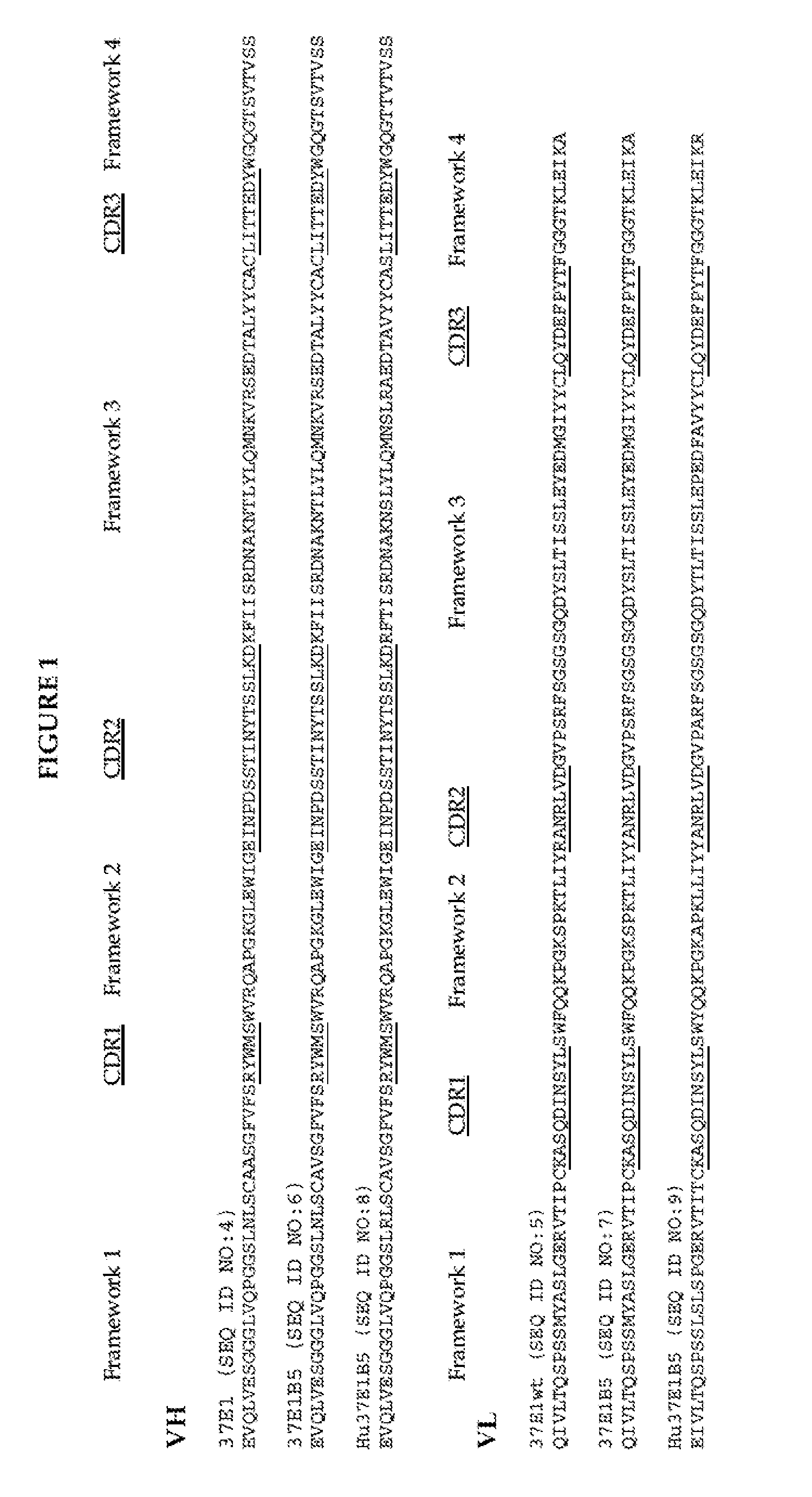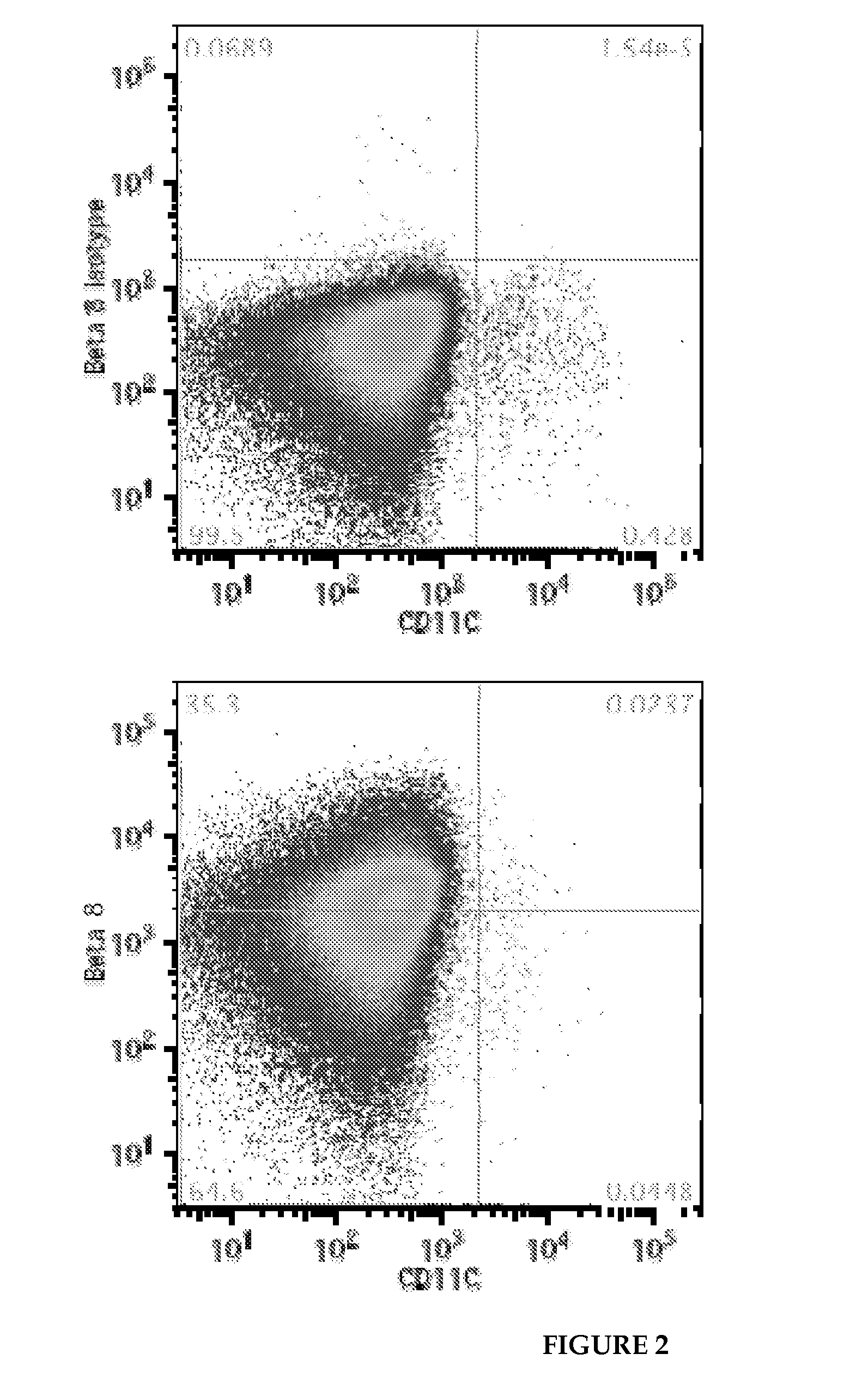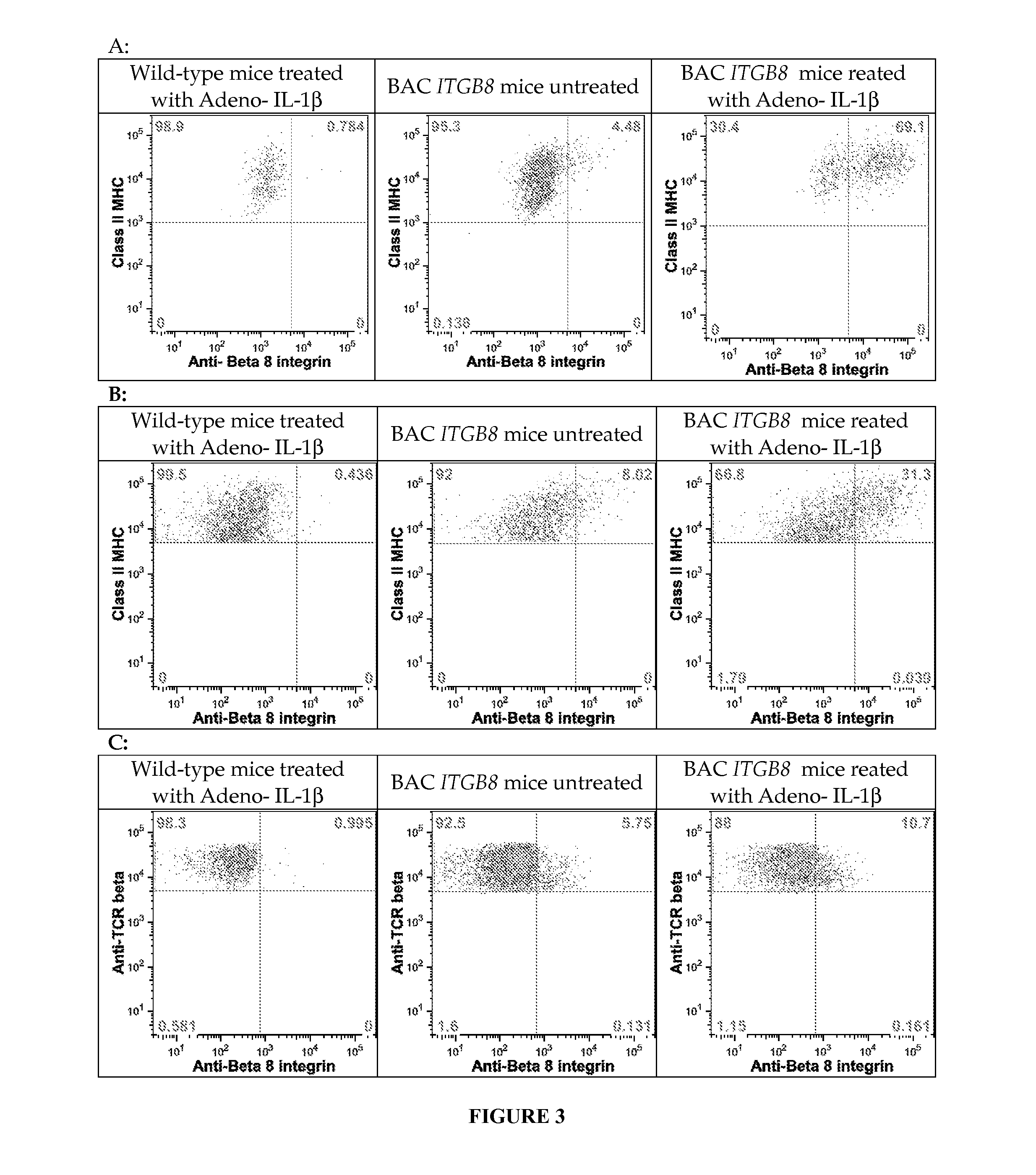Antibodies that bind integrin alpha-v beta-8
a technology of integrin and antibodies, applied in the field of antibodies that bind integrin alpha-v beta-8, can solve the problems of difficult role of tgf- as a tumor suppressor in cancer, and achieve the effect of improving the survival rate of tgf-
- Summary
- Abstract
- Description
- Claims
- Application Information
AI Technical Summary
Benefits of technology
Problems solved by technology
Method used
Image
Examples
example 1
A. Example 1
37E1B5 Antibody
[0203]The heavy and light chain V region sequences of 37E1, 37E1B5, and humanized 37E1B5 (h37E1B5 or Hu37E1B5) are shown in FIG. 1. The framework and CDR regions are indicated. The humanized 37E1B5 antibody retains the high affinity and activity of 37E1B5.
[0204]In in vitro culture, 37E1 at a concentration of about 200 μg / ml inhibits release of active, mature TGFβ peptide. As explained above, 37E1B5 has a much higher affinity, and is active in the picomolar range. 37E1B5 at 10 μg / m is very effective for inhibiting release of active, mature TGFβ peptide in in vitro culture.
example 2
B. Example 2
Generation of the 11E8 and 14E5 Antibodies
[0205]The 11E8 and 14E5 antibodies were produced in hybridoma cells, which were created by fusing SP2 / 0 myeloma cells with lymphocytes from specifically immunized mice. The mice were immunized by subcutaneous injection of an engineered version of secreted, purified integrin αβ8.
example 3
C. Example 3
Characterization of the β8 Epitope
[0206]Chimeric integrin β8 constructs, which swapped mouse sequences into human ITGB8 were used to localize the binding epitopes for the 37E1B5, 11E8, and 14E5 antibodies. The epitope was localized by antibody binding, cell surface staining, and detection by flow cytometry. The epitope is encompassed within amino acids 121-180 of human integrin β8 (relative to theβ8 sequence shown in SEQ ID NO:17). All three antibodies bind to human β8, but not to mouse β8. Therefore, at least one of the 9 non-conservative amino acid differences or 7 minor amino acid differences (indicated by + in the middle line of the sequence) are included in the binding epitope, or affect the 3-dimensional structure of the domain in such a way as to distinguish the mouse from the human protein. The epitope falls in what is known as the Psi hybrid and the alpha1 helix and alpha1 linker region of the Beta-I domain of the integrin β8 subunit, and is found on the surface...
PUM
| Property | Measurement | Unit |
|---|---|---|
| concentration | aaaaa | aaaaa |
| concentration | aaaaa | aaaaa |
| adhesion | aaaaa | aaaaa |
Abstract
Description
Claims
Application Information
 Login to View More
Login to View More - R&D
- Intellectual Property
- Life Sciences
- Materials
- Tech Scout
- Unparalleled Data Quality
- Higher Quality Content
- 60% Fewer Hallucinations
Browse by: Latest US Patents, China's latest patents, Technical Efficacy Thesaurus, Application Domain, Technology Topic, Popular Technical Reports.
© 2025 PatSnap. All rights reserved.Legal|Privacy policy|Modern Slavery Act Transparency Statement|Sitemap|About US| Contact US: help@patsnap.com



